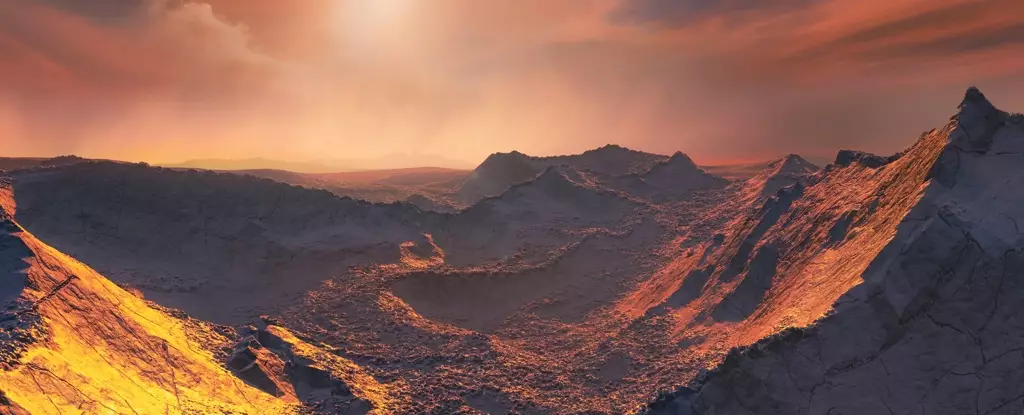Astronomers have made a remarkable discovery in the search for exoplanets. They have found a new Super-Earth named TOI-715b, located approximately 137 light-years away. This planet orbits an M-dwarf, or red dwarf, star and is about 1.55 times the radius of Earth. The most intriguing aspect of TOI-715b is that it resides within the star’s habitable zone, also known as the conservative habitable zone (CHZ). In addition to TOI-715b, there is another Earth-sized planetary candidate in the system, potentially making it the smallest habitable zone planet discovered by NASA’s TESS (Transiting Exoplanet Survey Satellite) mission.
The concept of the habitable zone arises from the idea that certain conditions must be met for a planet to support liquid water, a crucial component for the development of life as we know it. However, defining the boundaries of the habitable zone is a complex task, as multiple factors come into play. Elements such as the spectral type of the star, planetary albedo, mass, and atmospheric conditions can influence the presence of liquid water on a planet. In this case, TOI-715b’s position within the star’s habitable zone showcases the potential for liquid water to exist on its surface.
Exploring the Fulton Gap
TOI-715b’s discovery also sheds light on an intriguing phenomenon known as the Fulton Gap, which refers to the gap observed in the population of small exoplanets between 1.5 and 2 Earth radii. This gap, also referred to as the sub-Neptune radius gap, presents an interesting puzzle for astronomers. It suggests that planets in this range must undergo a process of mass loss to end up in the gap. The exact mechanism behind this mass loss is believed to be photoevaporation, facilitated by the star’s influence.
TOI-715b’s Role in Understanding Exoplanets
TOI-715b’s position within the Fulton Gap means that it holds valuable information about the mechanisms of planetary formation and post-formation evolution. By studying planets within this gap, scientists hope to gain a deeper understanding of the forces that shape this population of exoplanets. Recent research suggests that M-dwarfs, like the star in the TOI-715 system, may have a density gap rather than a radius gap, further adding to the complexity and mystery of this phenomenon. TOI-715b represents an exceptional opportunity to study these gaps and expand our knowledge of exoplanetary systems.
One of the most anticipated events in the field of exoplanet research is the launch and operation of the James Webb Space Telescope (JWST). This powerful instrument will provide scientists with detailed observations of exoplanetary atmospheres and their composition. TOI-715b is poised to become one of the prime targets for the JWST due to its proximity to its host star, making its transits more frequent and observable. Its closer proximity and small size enable the JWST to gather valuable data in less time compared to other targets, optimizing the utilization of the telescope’s capabilities.
The presence of TOI-715b within the habitable zone raises the question of its potential habitability and the possibility of supporting life. While the JWST’s spectroscopy capabilities would provide a definitive answer, researchers can only speculate at this point. However, several factors point towards the planet’s potential habitability. TOI-715, the star hosting the Super-Earth, exhibits a low degree of magnetic activity, indicating a reduced occurrence of flares commonly associated with younger M-dwarfs. These flares can jeopardize planetary habitability and even strip away atmospheres, potentially explaining the existence of the photoevaporation valley. Furthermore, the system also harbors another potential habitable zone planet, TIC 271971130.02, which, if confirmed, would be the smallest one discovered by TESS.
The TOI-715 system represents a captivating target for further scientific investigation. TOI-715b, in particular, holds immense potential in unraveling the mysteries of exoplanets, shed light on the intricacies of photoevaporation, and contribute to our understanding of exoplanet distribution around M-dwarfs. The upcoming observations with the JWST will undoubtedly provide a wealth of data on TOI-715b’s atmosphere and further fuel the excitement and curiosity of astronomers. The quest to discover and understand other worlds continues, as we search for signs of life and expand our understanding of the vast universe beyond our own planet.


Leave a Reply